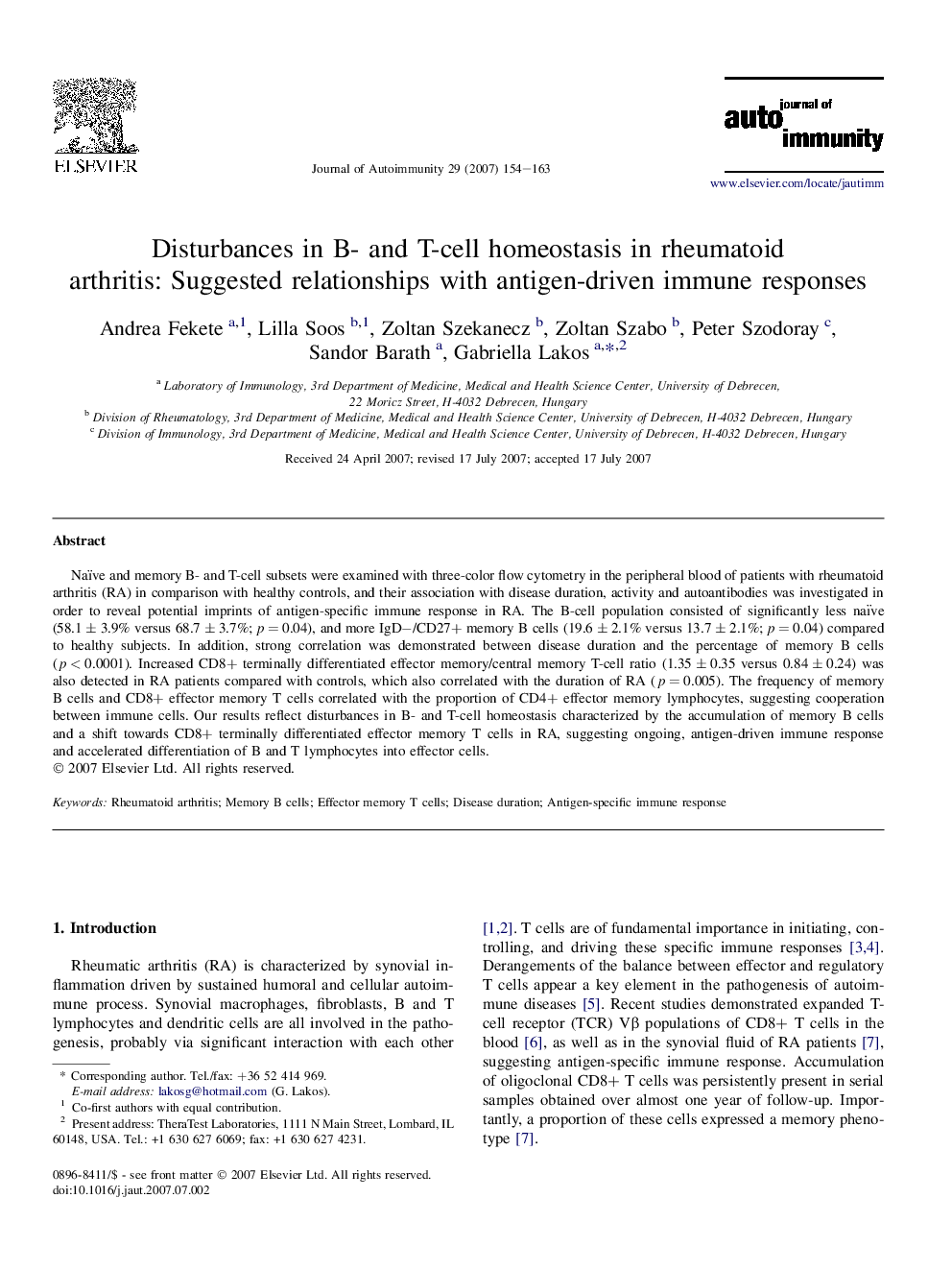| Article ID | Journal | Published Year | Pages | File Type |
|---|---|---|---|---|
| 3368508 | Journal of Autoimmunity | 2007 | 10 Pages |
Naïve and memory B- and T-cell subsets were examined with three-color flow cytometry in the peripheral blood of patients with rheumatoid arthritis (RA) in comparison with healthy controls, and their association with disease duration, activity and autoantibodies was investigated in order to reveal potential imprints of antigen-specific immune response in RA. The B-cell population consisted of significantly less naïve (58.1 ± 3.9% versus 68.7 ± 3.7%; p = 0.04), and more IgD−/CD27+ memory B cells (19.6 ± 2.1% versus 13.7 ± 2.1%; p = 0.04) compared to healthy subjects. In addition, strong correlation was demonstrated between disease duration and the percentage of memory B cells (p < 0.0001). Increased CD8+ terminally differentiated effector memory/central memory T-cell ratio (1.35 ± 0.35 versus 0.84 ± 0.24) was also detected in RA patients compared with controls, which also correlated with the duration of RA (p = 0.005). The frequency of memory B cells and CD8+ effector memory T cells correlated with the proportion of CD4+ effector memory lymphocytes, suggesting cooperation between immune cells. Our results reflect disturbances in B- and T-cell homeostasis characterized by the accumulation of memory B cells and a shift towards CD8+ terminally differentiated effector memory T cells in RA, suggesting ongoing, antigen-driven immune response and accelerated differentiation of B and T lymphocytes into effector cells.
